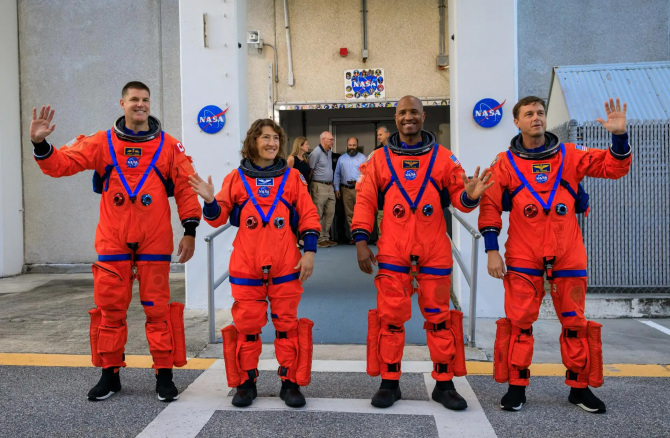Artemis II will launch in 2025, and Artemis III a year later, rather than later this year.
Although the Artemis Program was formally established by NASA in 2017 with the intention of bringing humans back to the Moon, the agency has been working on the spacecraft that will bring us there for an even longer period of time. However, the organization is going to require a little bit more time. A significant update on NASA’s intentions for the moon has been made public, and it involves a postponement of the Artemis II and Artemis III missions. It has been decided that there will be no Space Launch System (SLS) launch this year. Instead, Artemis II will be launched the next year, and Artemis III is scheduled to launch the year after that.
The Artemis II project was still scheduled to be released later this year prior to the news that was made. It is planned that this will be the first crewed mission in the Artemis Program, and it will involve travelling around the Moon without landing on the surface. Since the Apollo Program in 1972, Artemis III will be the first crewed lunar landing of any kind. Its initial schedule is for it to take place in the latter half of 2025. Artemis II is scheduled to be launched by NASA in September 2025, and Artemis III is scheduled to be launched in September 2026.
“We are returning to the Moon in a way we never have before, and the safety of our astronauts is NASA’s top priority as we prepare for future Artemis missions,” according to NASA administrator Bill Nelson. It was a flight without any crew members, but the Artemis I mission was successful and went off without a hitch. NASA will be need to rely on new environmental control and life support systems in order to successfully launch Artemis II. It has been stated by the agency that the testing of those systems has found problems that need to be solved in order to guarantee the safety of the crew.
The SLS need this kind of meticulous preparation due to the very nature of the system. As a result of the fact that it is an expendable rocket, NASA is required to construct a new rocket for each launch, and the resulting cost for each launch might be billions of dollars higher than what NASA had initially anticipated. NASA will only construct the number of Space Launch System (SLS) vehicles that it requires for the launches that are scheduled, and it will not be able to finalize the hardware until it is certain that the astronauts will be safe. It appears that there will be a gap of three years between Artemis I and III, while there will only be a break of one year between Artemis II and III. On the other hand, NASA has stated that it intends to use any lessons learned from Artemis II into Artemis III.

Despite the fact that the agency did not assign any of the blame to its commercial partners, it is necessary to take that into consideration when doing computations. While SpaceX is in the process of designing the Human Landing System (HLS) for Artemis III, the company has not yet successfully launched Starship into orbit. The construction of spacesuits of the next generation is falling behind schedule at Axiom Space, which is currently behind schedule.
One additional thing to consider with regard to this alteration in the schedule. The initial components of the Gateway lunar space station were also anticipated to be launched by NASA in the latter half of the year 2025. From this point forward, it is considering a later date that has not been stated, which will be more in line with the likely timeframe for Artemis IV in the year 2028. There is a possibility that NASA is preparing additional cargo flights to the Moon without crews. It has requested that SpaceX and Blue Origin employ the work that they have done on human landing technology to aid in the support of cargo vehicles as well.

